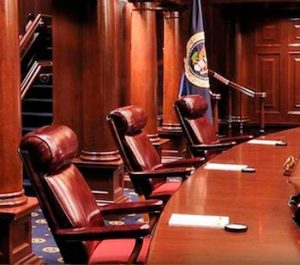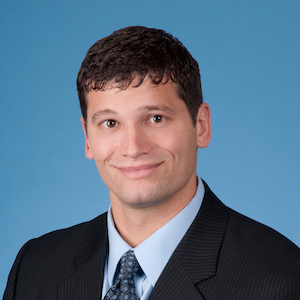Held: Summarizing testimony is not the same as making a clear, express finding with respect to an invalidity determination. Further, a claim construction that misreads the plain language of the claims and specification is clearly erroneous.
 The Federal Circuit recently vacated a district court decision which found a patent for the antipsychotic drug “Saphris,” belonging to Forest Laboratories (Forest), valid as nonobvious, but not infringed by ANDA filers Alembic Pharmaceuticals Ltd. (Alembic) and Breckenridge Pharmaceuticals, Inc. (Breckenridge). See Forest Labs., LLC v. Sigmapharm Labs., LLC, Nos. 2017-2369, 2017-2370, 2017-2372, 2017-2373, 2017-2374, 2017-2375, 2017-2376, 2017-2389, 2017-2412, 2017-2436, 2017-2438, 2017-2440, 2017-2441, 2019 U.S. App. LEXIS 7485 (Fed. Cir. Mar. 14, 2019) (Before Prost, Dyk, and Moore, J.) (Opinion for the court, Moore, J.). The Court highlighted an unanswered question that the district court skimmed over at trial and took issue with a claim construction. The Court vacated and remanded for further proceedings on this basis.
The Federal Circuit recently vacated a district court decision which found a patent for the antipsychotic drug “Saphris,” belonging to Forest Laboratories (Forest), valid as nonobvious, but not infringed by ANDA filers Alembic Pharmaceuticals Ltd. (Alembic) and Breckenridge Pharmaceuticals, Inc. (Breckenridge). See Forest Labs., LLC v. Sigmapharm Labs., LLC, Nos. 2017-2369, 2017-2370, 2017-2372, 2017-2373, 2017-2374, 2017-2375, 2017-2376, 2017-2389, 2017-2412, 2017-2436, 2017-2438, 2017-2440, 2017-2441, 2019 U.S. App. LEXIS 7485 (Fed. Cir. Mar. 14, 2019) (Before Prost, Dyk, and Moore, J.) (Opinion for the court, Moore, J.). The Court highlighted an unanswered question that the district court skimmed over at trial and took issue with a claim construction. The Court vacated and remanded for further proceedings on this basis.
Alembic and Breckenridge were among a number of drug manufacturers that filed Abbreviated New Drug Applications (ANDA) to market generic versions of Saphris. Saphris is an antipsychotic containing asenapine maleate. Saphris is administered sublingually, meaning under the tongue. Forest sued the ANDA filers for patent infringement.
At trial, the district court held that the relevant claims of asserted Patent No. 5,763,476 (“the ’476 patent”) were not invalid as obvious, and that Forest had not established infringement by Alembic or Breckenridge. Alembic and Breckenridge appealed the invalidity determination, and Forest cross-appealed the non-infringement decision as clearly erroneous. On appeal, the Federal Circuit vacated and remanded both the validity and infringement determinations for reconsideration under a correct claim construction of the term “excitation.”
The Federal Circuit found that the district court did not err with respect to some of its findings on the ’476 patent; for example, the Court agreed with the district court’s construction of Claim 1 in limiting the claim to sublingual formulations or buccal formulations, which dissolve in the cheek. The Court also found that the district court did not err in finding that there was a long felt need to combine asenapine maleate into a sublingual form as to render the invention nonobvious. However, this was not enough to compensate for the other errors made by the district court.
With respect to obviousness of the ’476 patent, Alembic and Breckenridge argued on appeal that a person of ordinary skill in the art would have been motivated to administer asenapine maleate sublingually to address issues with swallowing in certain populations of patients. When discussing motivation to combine, the district court merely summarized expert testimony stating that sublingually administering a drug would not improve compliance with drug administration in patients with schizophrenia. The Federal Circuit, however, noted that “[s]ummarizing testimony . . . is not a clear finding,” and stated that their review would be aided by an express finding on whether concerns about patients with swallowing difficulties would provide a motivation to combine. Due to the district court’s failure to make such a finding, the Court vacated and remanded to allow the district court to address this question. Further, with respect to whether there were unexpected results to support non-obviousness, the district court found that it was “surprising and unexpected” that sublingual administration resolved “serious cardiotoxic event[s],” but there was nothing in the prior art to suggest that cardiotoxic problems existed with other routes of drug administration. Therefore, the district court erred in its analysis of unexpected results.
Improper Construction
Finally, with respect to infringement of Claim 4 of the ’476 patent, the district court found that Breckenridge and Alembic did not infringe. Alembic and Breckenridge’s proposed generic products were indicated for the treatment of “manic episodes” associated with bipolar 1 disorder, whereas Claim 4 was directed to “a method for treating tension, excitation, anxiety, and psychotic and schizophrenic disorders.” The district court construed Claim 4 not to cover treatment of bipolar disorders.
The Federal Circuit found that “excitation” in Claim 4 referred to a symptom rather than a “disorder,” and the district court had therefore misconstrued the claim.
The use of the conjunction “and” before “psychotic and schizophrenic disorders” indicates that “psychotic and schizophrenic disorders” is a distinct item on the list, and that unlike the terms “psychotic” and “schizophrenic,” the words “tension,” “excitation,” and “anxiety” are not describing “disorders.” This is consistent with how “excitation” is used elsewhere in the specification. Moreover, experts for both parties agree that there is no such thing as an “excitation disorder,” further indicating the claim covers treatment of the symptom “excitation” rather than treatment of an “excitation disorder.” Although excitation may be a symptom of bipolar I disorder, the district court nevertheless carved bipolar I disorder out of its construction because it concluded that the “language of the ’476 patent is directed to ‘diseases’ and ‘disorders,’ not to symptoms of such.” This misreads the plain language of the claims and specification.
Id. at *20 (emphasis added).
Therefore, because the district court limited the term “excitation” to “excitation disorders,” the court erred in construing Claim 4. The Federal Circuit vacated and remanded for a new determination on infringement under this construction.

![[IPWatchdog Logo]](https://ipwatchdog.com/wp-content/themes/IPWatchdog%20-%202023/assets/images/temp/logo-small@2x.png)



![[Advertisement]](https://ipwatchdog.com/wp-content/uploads/2024/04/Patent-Litigation-Masters-2024-sidebar-early-bird-ends-Apr-21-last-chance-700x500-1.jpg)

![[Advertisement]](https://ipwatchdog.com/wp-content/uploads/2021/12/WEBINAR-336-x-280-px.png)
![[Advertisement]](https://ipwatchdog.com/wp-content/uploads/2021/12/2021-Patent-Practice-on-Demand-recorded-Feb-2021-336-x-280.jpg)
![[Advertisement]](https://ipwatchdog.com/wp-content/uploads/2021/12/Ad-4-The-Invent-Patent-System™.png)







Join the Discussion
No comments yet.